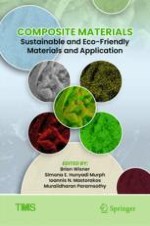This collection covers innovations in the field of composite materials with a specific focus on eco-friendly and environmentally sustainable systems. All composite fields are explored, including polymer, metal, and ceramic matrix composites with an emphasis on sourcing raw materials in a sustainable way as well as the development of composite materials for environmental sustainability. Topics will include the development of new materials for structural applications, reduction in energy consumption, and increased component life along with discussions of novel methods to reuse existing materials. Additional topics include, but are not limited to:
· Naturally Sourced Materials feedstock
· Recycled Material feedstock,
· Application of composite for reduced carbon footprint
· Development of novel materials to repurpose waste from other areas
